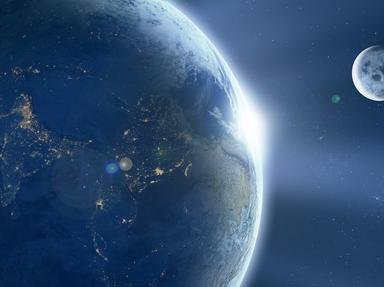Quiz Answer Key and Fun Facts
1. All the moons of Uranus are named after which of the following things?
2. Nitrogen-rich Titan is the second largest moon in our solar system and orbits which of the following planets?
3. Mercury is the only planet in our Solar System without a moon.
4. The largest moon of Neptune was named after a Greek sea god, the son of Poseidon. What is the name of this moon?
5. The moon Charon can be found orbiting which of the following dwarf planets?
6. Ganymede is the largest moon in our Solar System.
7. One of the moons of Saturn is named after the Giant son of Greek goddess Gaia. It is known for a large crater called Herschel. What is the name of this moon of Saturn?
8. With over 400 active volcanoes on its surface, Jupiter's third largest moon is the most geologically active body in the Solar System. The innermost of the Galilean moons, what is its name?
9. Mars was named for the Roman god of war, but its two moons were named for children of Ares, the Greek god of war. Which of Ares' children, whose names mean 'panic' and 'terror', are they?
10. In July of 1999, the remains of Dr. Eugene Shoemaker, who trained American astronauts, were deposited on our moon by the crash of the Lunar Prospector spacecraft.
Source: Author
dcpddc478
This quiz was reviewed by FunTrivia editor
CellarDoor before going online.
Any errors found in FunTrivia content are routinely corrected through our feedback system.

